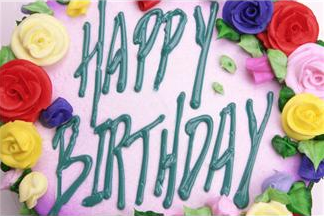Five eDiscovery Trailblazing Judges – eDiscovery Trends

Yesterday, we discussed an article in The American Lawyer by Alan Cohen about six people who deserve special consideration as true trailblazers in eDiscovery. Today, let’s take a look at five trailblazing judges in eDiscovery.
In Lisa Holton’s article (E-Discovery: A Front-Row Seat), also in The American Lawyer, she discusses how “judges…saw how uninformed many attorneys and their clients were about technology and how resistant they were to a series of new rules.” She profiles five “pioneers” that “have not only set the stage in procedure and case law, but have become teachers, writers, activists, and ongoing critics of this rapidly changing industry.” Here they are:
Shira Scheindlin, Judge, U.S. District Court for the Southern District of New York: Perhaps the most famous judge of the most famous case, Zubulake v. UBS Warburg, (which addressed legal holds on electronic documents) Judge Scheindlin has had a dramatic effect on shaping the industry. She also proceeded to address the levels of culpability — negligence, gross negligence, and willfulness in the electronic discovery context in her famous Pension Committee opinion. As Holton notes in her article, “Scheindlin’s involvement in the ongoing e-discovery pilot project dealing with complex litigation in the Southern District is an example of her continuing work to shape and improve e-discovery processes. And she’s been vocal on the issue of proportionality—the need to balance the total cost of electronic document discovery with the value of the case—from the start.” She has also been a busy speaker on eDiscovery topics and co-published a book back in 2009 called Electronic Discovery and Digital Evidence in a Nutshell.
Lee Rosenthal, Judge, U.S. District Court for the Southern District of Texas: After being elevated to chairman of the Judicial Conference Advisory Committee on Federal Rules of Civil Procedure in 2003, Judge Rosenthal led the effort to create and adopt the 2006 amendments to the rules that addressed – for the first time – how electronically stored information (ESI) should be handled in civil litigation. These Federal Rules have been instrumental in providing guidance to attorneys and judges on how to address issues with ESI, and the article provides some interesting “backstory” regarding that process.
Andrew Peck, U.S. Magistrate Judge, Southern District of New York: Judge Peck has been a leader in the effort to use technology to assist with the searching and review process and his February 2012 decision in Da Silva Moore v. Publicis Groupe & MSL Group is considered by many to be the first ruling approving computer-assisted review (click here for the considerable dispute that has followed) and his article Search, Forward is one of the few judicial articles advocating the use of computer-assisted review, which has become perhaps the hottest topic in eDiscovery today.
Paul Grimm, Judge, U.S. District Court for the District of Maryland: Judge Grimm has been a key advocate for proportionality and cooperation in the eDiscovery process. His ruling in 2008’s Mancia v. Mayflower Textile Services Co. contained a detailed examination of Rule 26(g) of the Federal Rules of Civil Procedure, which covers eDiscovery duty to disclose requirements, and other law calling for cooperation among parties in discovery. His ruling of severe sanctions in Victor Stanley, Inc. v. Creative Pipe, Inc. was also the very first case this blog covered on our very first day. 🙂
John Facciola, U.S. Magistrate Judge, U.S. District Court for the District of Columbia: Judge Facciola’s key eDiscovery opinions include: Citizens for Responsibility & Ethics in Washington v. Executive Office of the President (which forced preservation of digital media in government); United States v. O’Keefe (which set guidelines for keyword challenges); and Equity Analytics v. Lundin (which set guidelines for challenges or defenses of search methodology). Also, In Taydon v. Greyhound Lines, Inc., he laid down the law to the parties in the case requiring cooperation on eDiscovery issues, stating “there is a new sheriff in town—not Gary Cooper, but me.”
A link to Lisa’s article is here. So, what do you think? How have these judicial trailblazers influenced you? Please share any comments you might have or if you’d like to know more about a particular topic.
Disclaimer: The views represented herein are exclusively the views of the author, and do not necessarily represent the views held by CloudNine Discovery. eDiscoveryDaily is made available by CloudNine Discovery solely for educational purposes to provide general information about general eDiscovery principles and not to provide specific legal advice applicable to any particular circumstance. eDiscoveryDaily should not be used as a substitute for competent legal advice from a lawyer you have retained and who has agreed to represent you.





